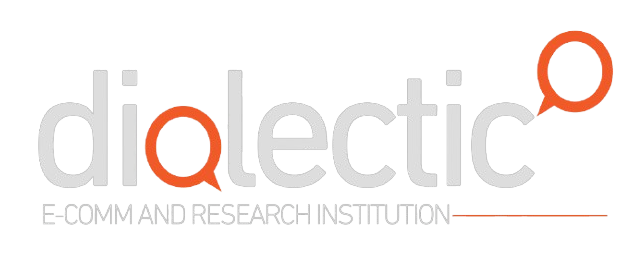نشرت الهيئة الحكومية الدولية المعنية بتغير المناخ (The Intergovernmental Panel on Climate Change )، التقرير التجميعي النهائي من التقرير السادس للهيئة خلال شهر فبرابر 2023، وقد سعى هذا الأخير إلى تلخيص المعلومات والاستنتاجات بلغة سهلة الفهم لأصحاب المصلحة المعنيين بالمناخ على المستوى الدولي والإقليمي، بحيث عمل على تشخيص الظروف الراهنة والتوجهات، والتطورات المتوقعة في المستقبل البعيد ورد الفعل المطلوب، والخطوات التي لا بدّ منها في المستقبل القريب. وقد أشار التقرير إلى كون ظاهرة الاحتباس الحراري غير المسبوقة في تاريخ كوكب الأرض، تعزى بالأساس إلى انبعاثات غازات الاحتباس الحراري الصادرة عن النشاطات المتعددة والمتنوعة للإنسان. وعلى الرغم من الخطط والإجراءات المعلن عنها من قبل دول العالم ما تزال فجوة الاستعداد كبيرة جداً، وستستمر في التوسع إذا لم يسع المنتظم الدولي إلى الاستعداد السريع، واتخاذ الإجراءات الصارمة لوقف انبعاث الغازات الدفيئة. وبالعودة إلى التقرير التجميعي المنشور، فقد أشار هذا الأخير، إلى كون الآثار الاقتصادية المنسوبة إلى تغير المناخ، تؤثر بشكل متزايد على سبل عيش الناس، وتتسبب في آثار اقتصادية ومجتمعية. وتم الكشف عن الأضرار الاقتصادية الناجمة عن تغير المناخ في القطاعات المعرضة للمناخ، مع تأثيرات إقليمية على الزراعة والغابات ومصايد الأسماك والطاقة والسياحة. لقد تأثرت سبل عيش الأفراد من خلال التغيرات في الإنتاجية الزراعية، والآثار على صحة الإنسان والأمن الغذائي، وتدمير المنازل والبنية التحتية، وفقدان الممتلكات والدخل، مع آثار سلبية على المساواة بين الجنسين والعدالة الاجتماعية. وقد أشارت مجموعة من الدراسات إلى أن تغير المناخ الذي يسببه الإنسان يزيد من تساقط الأمطار الغزيرة المرتبطة بالأعاصير المدارية. أثرت حرائق الغابات في العديد من المناطق في التجمعات السكانية والنشاط الاقتصادي والصحة.
في المدن والمستوطنات، تؤدي تأثيرات المناخ في البنية التحتية الرئيسية إلى خسائر وأضرار في أنظمة المياه والغذاء، والنشاط الاقتصادي عموما، مع امتداد الآثار إلى ما وراء المنطقة التي تتأثر بشكل مباشر بخطر المناخ. ولهذا تأثرت سبل عيش الأفراد والجماعات من خلال التغيرات في الإنتاجية الزراعية، وما تبع ذلك من تأثير في صحة الإنسان والأمن الغذائي، وتدمير المنازل والبنية التحتية، وفقدان الممتلكات والدخل، وتزايد الهوة في المساواة بين الجنسين والعدالة الاجتماعية.
الجهود العالمية للتصدي لتغير المناخ، ومنذ تقرير التقييم الخامس لسنة 2022، ساعد الوعي العام المتزايد والتنوع المتزايد للجهات الفاعلة بشكل عام في تسريع الالتزام السياسي. وقد ظهرت الحركات الاجتماعية كعوامل محفزة في بعض مناطق العالم، وغالبًا ما تعتمد على المبادرات المحلية السابقة، بما في ذلك الحركات المحلية التي يقودها السكان الأصليون، والحركات الشبابية، وحركات حقوق الإنسان، والحركات المناصرة لقضايا الجندر (النوع)، والتقاضي المناخي، والتي تعمل على زيادة الوعي. وفي بعض الحالات، أثرت هذه الحركات في نتيجة وطموح تدبير قضايا المناخ. وقد أدت الإجراءات التي تعطي الأولوية للإنصاف والعدالة المناخية والعدالة الاجتماعية والإدماج إلى نتائج أكثر استدامة ومنافع مشتركة وتقليل التفاوتات ودعم التغيير التحويلي وتعزيز القدرة على الصمود مع تغير المناخ. فالأكيد أن هناك حاجة فورية لاستجابات التكيف للحد من مخاطر المناخ المتزايدة، على وجه الخصوص،الاهتمام بالفئات المجتمعية الأكثر هشاشة. وبالتالي فإن الإنصاف والإدماج والتغير العادل تشكل مفتاح التقدم في التكيف مع التغير المناخي والطموحات المجتمعية القصوى من أجل التخفيف المتسارع بتبني إجراءات التكيف والتخفيف، عبر النطاقات والقطاعات والمناطق التي تعطي الأولوية للإنصاف والعدالة المناخية والنهج القائمة على الحقوق والعدالة الاجتماعية والشمولية وتؤدي تلك العوامل لا محالة إلى نتائج أكثر استدامة، كما تقلل من التفاوتات المجالية والمجتمعية، وتدعم التغيير التحويلي، وتعزز التنمية المقاومة للمناخ. هذا، ويمكن لسياسات إعادة التوزيع عبر القطاعات والمناطق التي تحمي الفقراء والضعفاء، وشبكات الأمان الاجتماعي والإنصاف والإدماج والتحولات العادلة، على جميع المستويات، تمكين طموحات مجتمعية أعمق وحل التفاوتات مع أهداف التنمية المستدامة 2030 (SDGs)، ولا سيما في مجالات/ قطاعات مخصوصة كالتعليم، الجوع والفقر والمساواة بين الجنسين والحصول على الطاقة. وقد أشار التقرير، إلى أنه يمكن لجهود التخفيف المتضمنة في سياق التنمية الأوسع أن تزيد وتيرة وعمق واتساع نطاق خفض الانبعاثات. كما أن الإنصاف والشمول والتحولات العادلة على جميع المستويات تتيح طموحات مجتمعية أعمق للتخفيف السريع والعمل المناخي. هذا بالإضافة إلى التعقيد المتزايد في مخاطر ارتفاع أسعار الغذاء، وانخفاض دخل الأسرة، وسوء التغذية المرتبط بالصحة والمناخ (خاصة سوء تغذية الأمهات ونقص تغذية الأطفال) والوفيات مع مستويات قليلة أو منخفضة من التكيف. فالمناطق والأشخاص الذين يعانون من قيود إنمائية كبيرة لديهم قابلية عالية للتأثر بالمخاطر المناخية. وبغية تعزيز نتائج التكيف للفئات الأكثر ضعفاً داخل البلدان والمناطق وغبرها، وجب اعتماد نهج يرتكز على الإنصاف والشمولية وتبني النهج القائمة على الحقوق، وقد أشار التقرير إلى كون 3.3 إلى 3.6 مليار شخص يعيشون في سياقات شديدة التأثر بتغير المناخ.
كما أشار التقرير، إلى أن المناطق التي تعاني من الفقر وتحديات الحوكمة ومحدودية الوصول إلى الخدمات والموارد الأساسية، والصراعات والمستويات العالية من سبل العيش الحساسة للمناخ (مثل المزارعين أصحاب الملكيات الصغيرة والرعاة ومجتمعات الصيد) تتميز بشدة الضعف في مستويات قصوى. ويمكن في هاته الحالات، التخفيف من العديد من المخاطر بالتكيف. كما تتأثر تحديات التنمية الحالية التي تسبب ضعفًا شديدًا بالأنماط التاريخية والمستمرة لعدم المساواة مثل الاستعمار، بالنسبة للعديد من الشعوب الأصلية والمجتمعات المحلية، ويتفاقم الضعف بسبب عدم الإنصاف والتهميش المرتبطين بالجندر (النوع) أو العرق أو الدخل المنخفض أو مزيج منهما، بالنسبة للعديد من الشعوب الأصلية والمجتمعات المحلية.
وأكد التقرير على أن المشاركة الهادفة والتخطيط الشامل والمتبني للقيم الثقافية ومعرفة السكان الأصليين والمعرفة المحلية والمعرفة العلمية تساعد في معالجة فجوات التكيف وتجنب سوء التكيف. وقد تشجع مثل هذه الإجراءات ذات المسارات المرنة على اتخاذ إجراءات جريئة في الوقت المناسب. إن دمج التكيف مع المناخ في برامج الحماية الاجتماعية، بما في ذلك التحويلات النقدية وبرامج الأشغال العامة، من شأنه أن يزيد القدرة على التكيف مع تغير المناخ، لا سيما عندما تكون مدعومة بالخدمات الأساسية والبنية التحتية. فالإنصاف والإدماج والتحولات العادلة والمشاركة الواسعة والهادفة لجميع الجهات الفاعلة ذات الصلة في صنع القرار على جميع المستويات تتيح طموحات مجتمعية أعمق للتخفيف السريع والعمل المناخي على نطاق أوسع، وبناء الثقة الاجتماعية، ودعم التغييرات التحويلية والتقاسم العادل للمنافع والأعباء. كما يظل الإنصاف عنصرًا مركزيًا في نظام المناخ في الأمم المتحدة، على الرغم من التحولات في التمييز بين الدول بمرور الوقت والتحديات في تقييم الحصص العادلة. كما تتضمن مسارات التخفيف الطموحة تغييرات كبيرة وأحيانًا معطلة في الهيكل الاقتصادي، مع عواقب التوزيع الشاسعة، داخل البلدان وفيما بينها، بما في ذلك تحويل الدخل والشغل أثناء الانتقال من أنشطة الانبعاثات العالية إلى المنخفضة. في حين أن بعض الوظائف قد تفقد، إن الانتقال إلى الانبعاثات المنخفضة يمكن أن يفتح أيضًا فرصًا لتعزيز المهارات وخلق الوظائف. كما يمكن أن يساعد في توسيع الوصول العادل إلى التمويل والتكنولوجيات والحوكمة التي تسهل التخفيف والنظر في العدالة المناخية عبر التقاسم العادل للمنافع والأعباء، خاصة بالنسبة للبلدان والمجتمعات الضعيفة. وفي هذا الصدد، أشار التقرير، إلى أن أولويات التنمية بين البلدان تعكس أيضًا نقاط انطلاق وسياقات مختلفة، وبالتالي ستختلف الظروف التمكينية لتحويل مسارات التنمية نحو زيادة الاستدامة، مما يؤدي إلى ظهور احتياجات مختلفة. ويُعد تنفيذ مبادئ الانتقال العادل من خلال عمليات صنع القرارات الجماعية والتشاركية طريقة فعالة لإدماج مبادئ الإنصاف في السياسات العمومية على جميع المستويات اعتمادًا على الظروف الوطنية، بينما تم في العديد من البلدان إنشاء لجان انتقالية وفرق عمل وسياسات وطنية.
لقد أشار التقرير، إلى كون العديد من الأدوات الاقتصادية والتنظيمية كانت فعالة في الحد من الانبعاثات، وقد ساعدت الخبرة العملية في تصميم الأدوات لتحسينها مع معالجة أهداف التوزيع والقبول الاجتماعي. وأيضا تصميم التدخلات السلوكية، بما في ذلك الطريقة التي يتم بها تقديم الاختيارات للمستهلكين والتي تعمل بشكل تآزري مع إشارات الأسعار، مما يجعل المزيج أكثر فعالية. كما أن الأشخاص ذوو الوضع الاجتماعي والاقتصادي العالي يساهمون بشكل غير متناسب في الانبعاثات، ولديهم أعلى احتمالية لخفض الانبعاثات، على سبيل المثال، المستثمرين، والمستهلكين، ونماذج أخرى يحتذى بها، والمهنيين. فهناك خيارات بشأن تصميم الأدوات والوسائل مثل الضرائب، والإعانات، والأسعار، والنهج القائمة على الاستهلاك، التي تكملها الأدوات التنظيمية للحد من الاستهلاك المتميز بالانبعاثات المرتفعة، مع تحسين العدالة والرفاه المجتمعي. ويمكن دعم التغييرات في السلوك وأسلوب الحياة لمساعدة المستخدمين في الحلقات النهائية لسلسلة الاستهلاك على تبني خيارات منخفضة الكثافة في غازات الاحتباس الحراري، وذلك من خلال تبني السياسات المراعية لخفض الانبعاثات والبنية التحتية والتكنولوجيا ذات الفوائد المشتركة المتعددة لرفاهية المجتمعات. ويمكن أن يكون توسيع نطاق الوصول العادل إلى التمويل والتكنولوجيات والقدرات المحلية والدولية بمثابة حافز لتسريع التخفيف وتحويل مسارات التنمية في سياقات الدخل المنخفض، وعليه، فإن القضاء على الفقر المدقع، وفقر الطاقة، وتوفير مستويات معيشية لائقة للجميع في هذه المناطق، يدخل في سياق تحقيق أهداف التنمية المستدامة 2030، على المدى القريب، ويمكن تحقيقه دون زيادة كبيرة في الانبعاثات العالمية. إن تطوير التكنولوجيا ونقلها وبناء القدرات والتمويل يمكن أن يدعم البلدان النامية / المناطق التي تتحول/ تنتقل إلى أنظمة النقل منخفضة الانبعاثات، وبالتالي يسهم في توفير فوائد مشتركة متعددة. كما أن التنمية المقاومة للمناخ تتطورعندما تعمل الجهات الفاعلة بطرق منصفة وعادلة وتمكينية للتوفيق بين المصالح والقيم المتباينة ووجهات النظر العالمية، نحو نتائج عادلة وشاملة. عند تنفيذ التخفيف والتكيف معًا، وأخذ التباينات في الاعتبار، يمكن تحقيق العديد من الفوائد المشتركة والتآزر لرفاهية الإنسان وكذلك النظام البيئي وصحة الكوكب. وشدد التقرير، على أن هناك صلة قوية بين التنمية المستدامة وقابلية التأثر ومخاطر المناخ، وعلى كون شبكات الأمان الاجتماعي التي تدعم التكيف مع تغير المناخ تتمتع بفوائد مشتركة قوية مع أهداف التنمية مثل التعليم والتخفيف من حدة الفقر وإدماج مقاربة النوع الاجتماعي والمساواة بين الجنسين والأمن الغذائي. وتسهم كذلك، استعادة الأراضي في التخفيف والتكيف مع أوجه التآزر من خلال خدمات النظام البيئي المحسنة والعوائد الاقتصادية الإيجابية والفوائد المشتركة للحد من الفقر وتحسين سبل العيش. كما يمكن تقييم المقايضات وتقليلها من خلال التركيز على بناء القدرات والتمويل ونقل التكنولوجيا والاستثمارات؛ الحوكمة، والتنمية، والسياق المحدد القائم على النوع الاجتماعي واعتبارات العدالة الاجتماعية الأخرى مع المشاركة الهادفة للشعوب الأصلية والمجتمعات المحلية والسكان المعرضين للخطر.
أفاد التقرير أيضاً، أن مؤسسات المناخ المحلية والوطنية ودون الوطنية الفعالة، مثل الهيئات ذات الخبرة والتنسيقيات، تمكِّن من اتخاذ إجراءات مشتركة ومتعددة النطاقات، وبناء توافق في الآراء بشأن العمل بين المصالح المتنوعة، وإبلاغ إعدادات الاستراتيجية. وهذا يتطلب قدرة مؤسسية كافية على جميع المستويات، وغالبًا ما يتم تقليل مواطن الضعف والمخاطر المناخية من خلال القوانين والسياسات والعمليات التشاركية والتدخلات المصممة والمنفذة بعناية، والتي تعالج أوجه عدم المساواة المحددة للسياق، مثل القائمة على أساس الجنس والعرق والإعاقة والعمر والموقع والدخل. كما يتأثر دعم السياسات بالشعوب الأصلية والشركات والجهات الفاعلة في المجتمع المدني، بما في ذلك الشباب والعمل والإعلام والمجتمعات المحلية، ويتم تعزيز الفعالية من خلال الشراكات بين العديد من المجموعات المختلفة في المجتمع. المتزايد، مع وجود عدد كبير من الحالات في بعض البلدان المتقدمة، والبلدان بعدد أقل بكثير في بعض البلدان النامية، وقد أثر في بعض الحالات في نتائج وطموح تدبير قضايا المناخ عند تنفيذ التخفيف والتكيف معًا، والاقتران مع أهداف التنمية المستدامة 2030 الأوسع نطاقًا، من شأنه أن يؤدي إلى فوائد متعددة لرفاهية الإنسان وكذلك صحة النظام الإيكولوجي وصحة الكوكب. إن نطاق هذه التفاعلات الإيجابية مهم في مشهد سياسات المناخ على المدى القريب عبر المناطق والقطاعات والأنظمة. فعلى سبيل المثال، يمكن أن توفر إجراءات التخفيف في الزراعة والغابات واستخدامات الأراضي الأخرى ( AFOLU : Agriculture, Forestry, and Other Land Use) في تغيير استخدام الأراضي والحراجة، عند تنفيذها على نحو مستدام، عمليات خفض وإزالة انبعاثات غازات الدفيئة على نطاق واسع والتي تعود بالنفع في الوقت نفسه على التنوع البيولوجي والأمن الغذائي وإمدادات الخشب وخدمات النظم البيئية الأخرى، ولكن لا يمكنها التعويض بشكل كامل عن إجراءات التخفيف المتأخرة في قطاعات أخرى. وبالمثل، يمكن أن يكون لتدابير التكيف في الأرض والمحيطات والنظم الإيكولوجية فوائد واسعة النطاق للأمن الغذائي والتغذية والصحة والرفاهية والنظم الإيكولوجية والتنوع البيولوجي. وبالمثل، تعتبر النظم الحضرية مواقع مترابطة بالغة الأهمية للتنمية المقاومة للمناخ؛ بحيث يمكن للسياسات الحضرية التي تنفذ تدخلات متعددة أن تسفر عن مكاسب في التكيف أو التخفيف مع الإنصاف ورفاه الإنسان. ويمكن أن تحسن حزم السياسات المتكاملة القدرة على دمج اعتبارات الإنصاف والمساواة بين الجنسين والعدالة. كما يمكن للسياسات والتخطيط المتسق عبر القطاعات أن يزيد التآزر إلى أقصى حد ويتجنب أو يقلل التفاوتات بين التخفيف والتكيف. هذا سيتطلب العمل الفعال في جميع المجالات المذكورة أعلاه التزامًا سياسيًا على المدى القريب ومتابعة اجتماعية في مجالات: التعاون، والتمويل، والمزيد من السياسات المتكاملة المشتركة بين القطاعات والدعم والإجراءات.
وتعتبر الهيئة الحكومية الدولية المعنية بتغير المناخ (IPCC) هي الهيئة التابعة للأمم المتحدة المكلفة بتقييم العلوم المتعلقة بتغير المناخ. وقد أنشأها برنامج الأمم المتحدة للبيئة (UNEP) والمنظمة العالمية للأرصاد الجوية (WMO) في سنة 1988 لتزويد القادة السياسيين بتقييمات علمية دورية بشأن تغير المناخ وآثاره ومخاطره، وطرح استراتيجيات للتكيف مع تغير المناخ والتخفيف من آثاره. وفي العام نفسه، أيدت الجمعية العامة للأمم المتحدة قرار المنظمة العلمية للأرصاد الجوية (WMO) وبرنامج الأمم المتحدة للبيئة (UNEP) إنشاء الهيئة (IPCC)، وتضم الهيئة (IPCC) حالياً 195 دولة عضواً. ويساهم آلاف الأشخاص من جميع أنحاء العالم في عمل الهيئة (IPCC). وفيما يتعلق بتقارير التقييم، يتطوع أعضاء اللجنة العلمية للهيئة (IPCC) بوقتهم لتقييم آلاف من الأوراق العلمية التي تنشر كل علم ملخصا شاملا لما هو معروف عن أسباب تغير المناخ ومخاطره في المستقبل، وكيف يمكن لاستراتيجيات التكيف مع تغير المناخ والتخفيف من آثاره أن تحد من تلك المخاطر. وتزود تقييمات الهيئة (IPCC) الحكومات على جميع المستويات بمعلومات علمية يمكن أن تستخدمها في وضع سياساتها المناخية. وتعد تقييمات الهيئة (IPCC) من المدخلات الرئيسية في المفوضات الدولية الرامية إلى التصدي لتغير المناخ. وتكفل موضوعية تقارير الهيئة (IPCC) وشفافيتها عن طريق صياغتها واستعراضها على عدة مراحل. ويتكون كل تقرير تقييم للهيئة (IPCC) من مساهمات الفرق العاملة الثلاثة وتقرير تجميعي. ويدمج التقرير التجميعي نتائج تقارير الفرق العاملة الثالثة وأي تقارير خاصة أعدت في دورة التقييم.

التنمية المستدامة
نسلط الضوء على المبادئ والممارسات التي تساهم في بناء مستقبل أكثر استدامة للأجيال القادمة.
عرض جميع المدونات >

0 التعليقات
اترك ردًا
لن يتم نشر عنوان بريدك الإلكتروني. الحقول المطلوبة مميزة بعلامة *